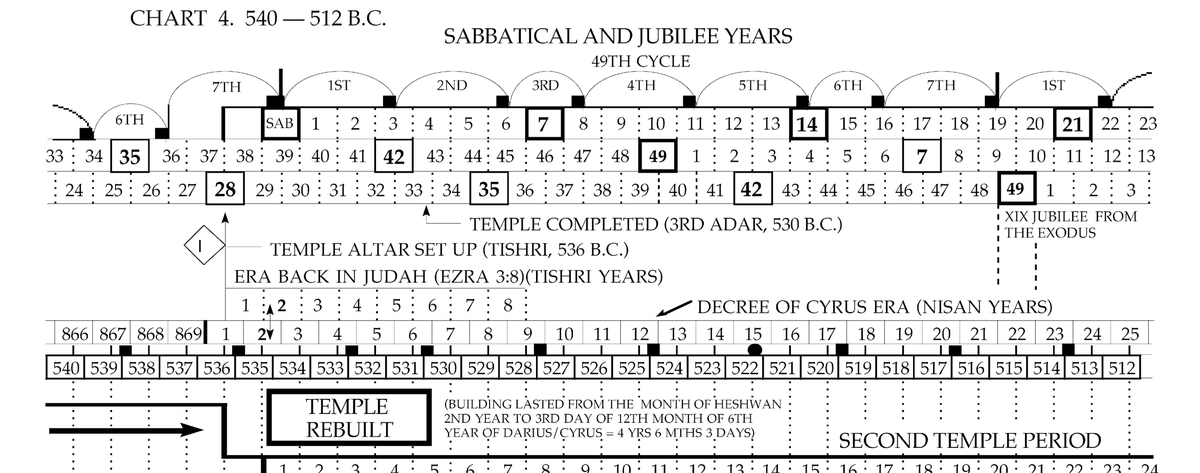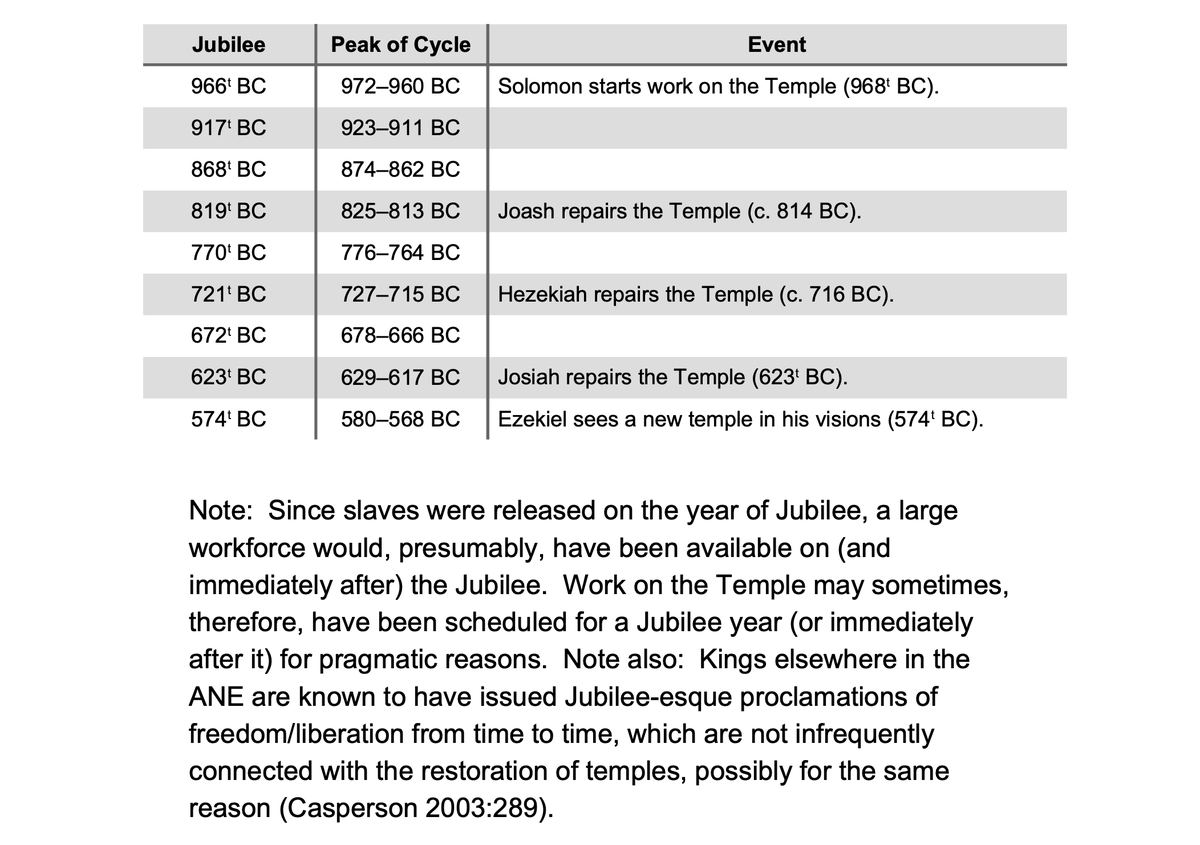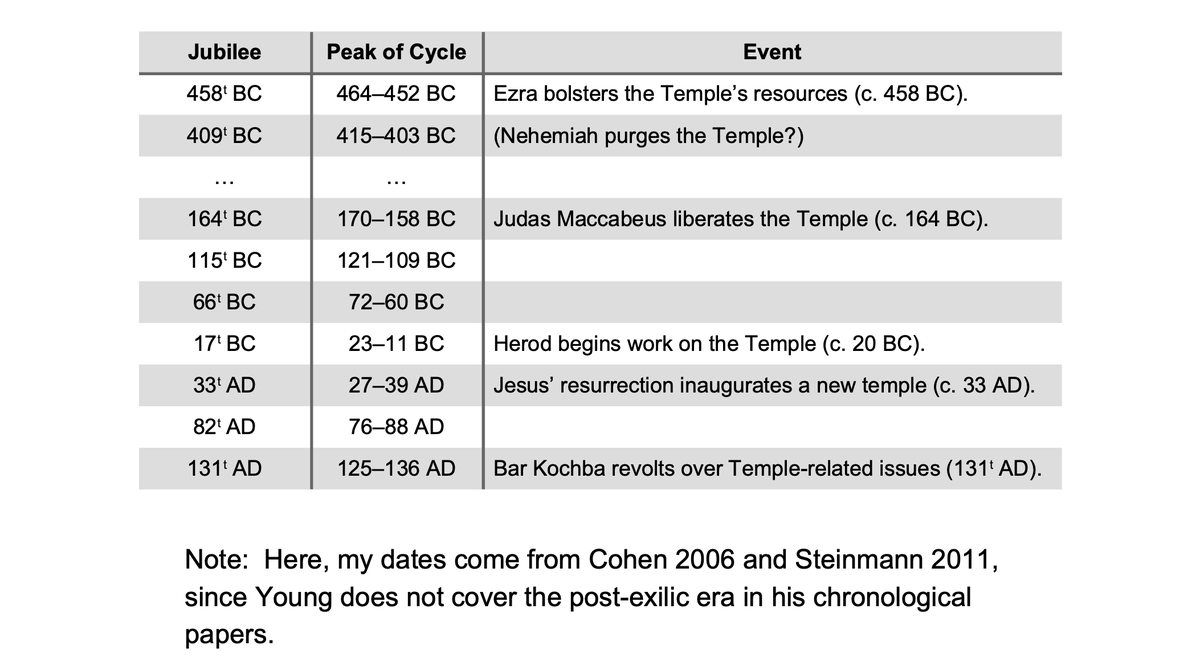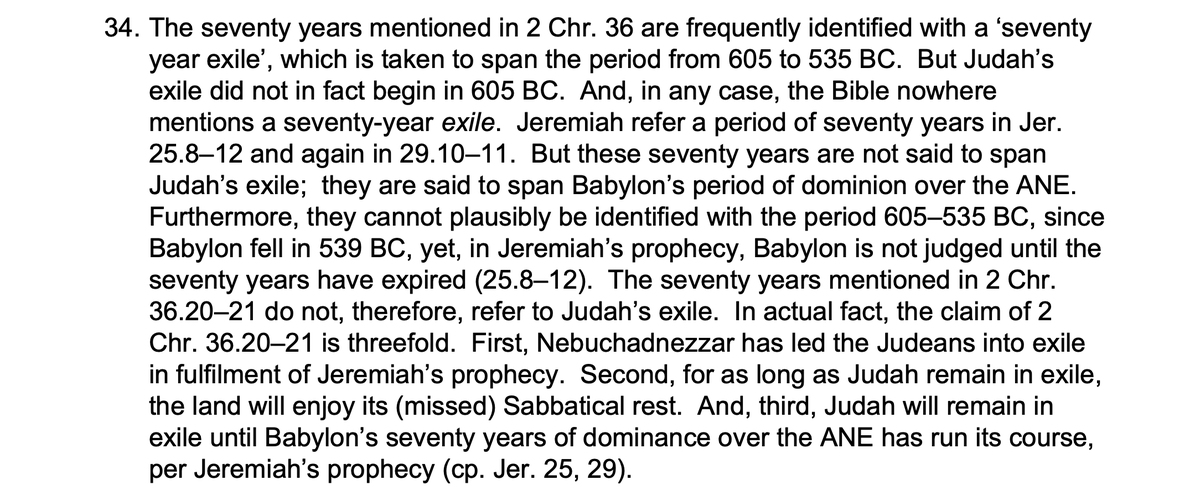🔹 a 1406 BC entry into Canaan, and
🔹 a 17th Jubilee observance in 574 BC, in the year of Ezekiel’s final vision (cp. Ezek. 40.1).
Its rhythm/periodicity has left a mark on Biblical history.
It imbues particular periods of time with particular significance.
The days of the week comes to a climax in the Sabbath.
The weeks of the month come to a climax at the end of the second week—i.e., 14th day of the month—,
which imbues the 14th day of each month (when the feasts of Passover and Tabernacles take place) with special significance.
And the months of the year come to their climax in the 7th month (at Rosh ha-Shanah),
at which point three major holy days occur in quick succession (Trumpets, Atonement, and Tabernacles).
Time flows up to the 7th month of the year,
where it momentarily pauses before it flows down into the latter months of the year.
where they remain for seven days before they return to their hometowns.
If the 7th month marks the pinnacle of the year, then the 7th year marks the pinnacle of a week of years.
And, if the Sabbatical year marks the pinnacle of each week of years,
...and hence provides an even more pronounced foreshadow of the release to come (cp. Dan. 9.24–27).
which the Israelites would no doubt have anticipated with great excitement.
Before I finish up, I’d like to proffer one more line of evidence for my proposed reconstruction of Israel’s Sabbatico-Jubilee cycle,
namely the calculation inherent in the duration of Judah’s exile.
Since ‘the land’ has not been granted its appointed Sabbatical years, the Babylonians are sent to wage war against Jerusalem (36.17–20)...
In their absence, the land enjoys its missed years of Sabbatical rest,
How many Sabbatical years Judah misses prior to the invasion of the Babylonians is not stated in 2 Chronicles 36 (or anywhere else).
Jerusalem fell in the summer of 587 BC.
And Babylon’s seventy years of dominance came to an end in October 539 = c. the 8th month of 539/538 BC (Young 2004).
which suggests Judah failed to observe 49 Sabbatical years.
Where do we end up?
Well, the first Sabbatical year would be 595t/594t, and the 49th would be 931t/930t BC,
971t/970t BC was Solomon’s 1st year,
which makes 932t/931t his 40th year and (simultaneously) Rehoboam’s 1st year (Young 2005) and, as such, the moment when Judah was born as a nation (1 Kgs. 11–12).
Just as Israel failed to observe a Passover or feast of Tabernacles (in the proper manner) for the entire period from Joshua’s day through to Josiah’s and beyond,
Every one of the 49 Sabbatical years from 931t/930t through to 595t/594t BC went unobserved.
And, as a result, Babylon enforced a 49-Tishri-year exile on Judah.
The answer to the question ‘How long?’ may often seem to be ‘Too long!’.
THE END.







